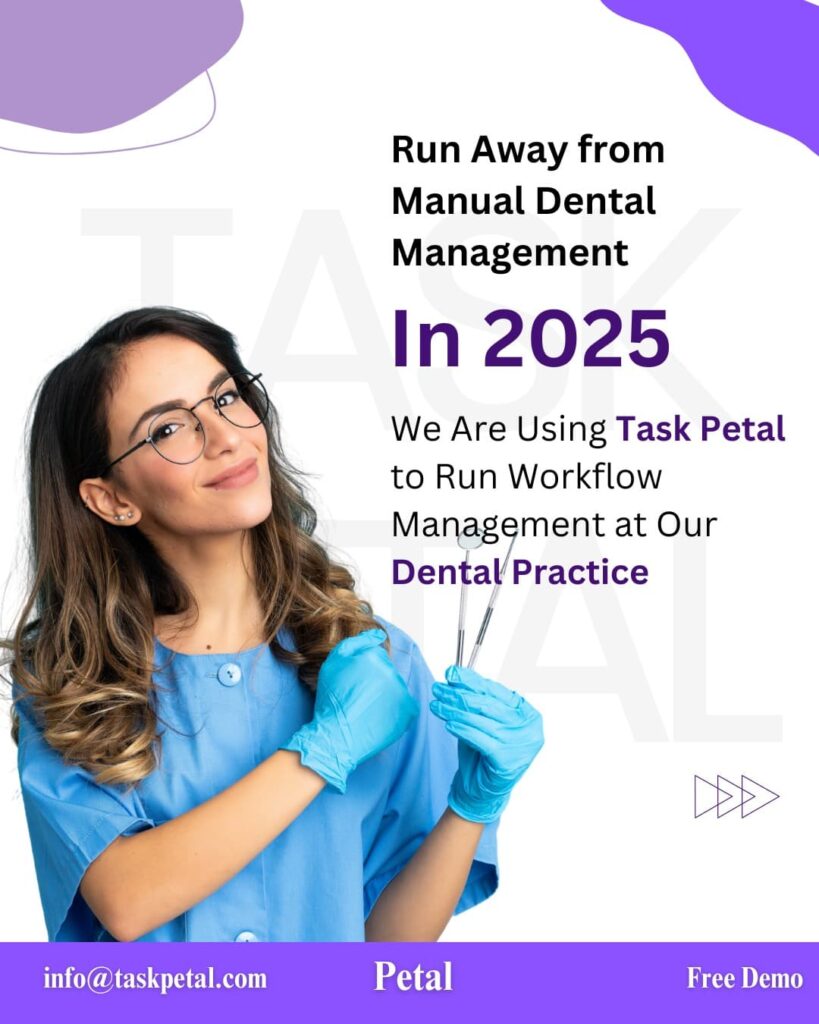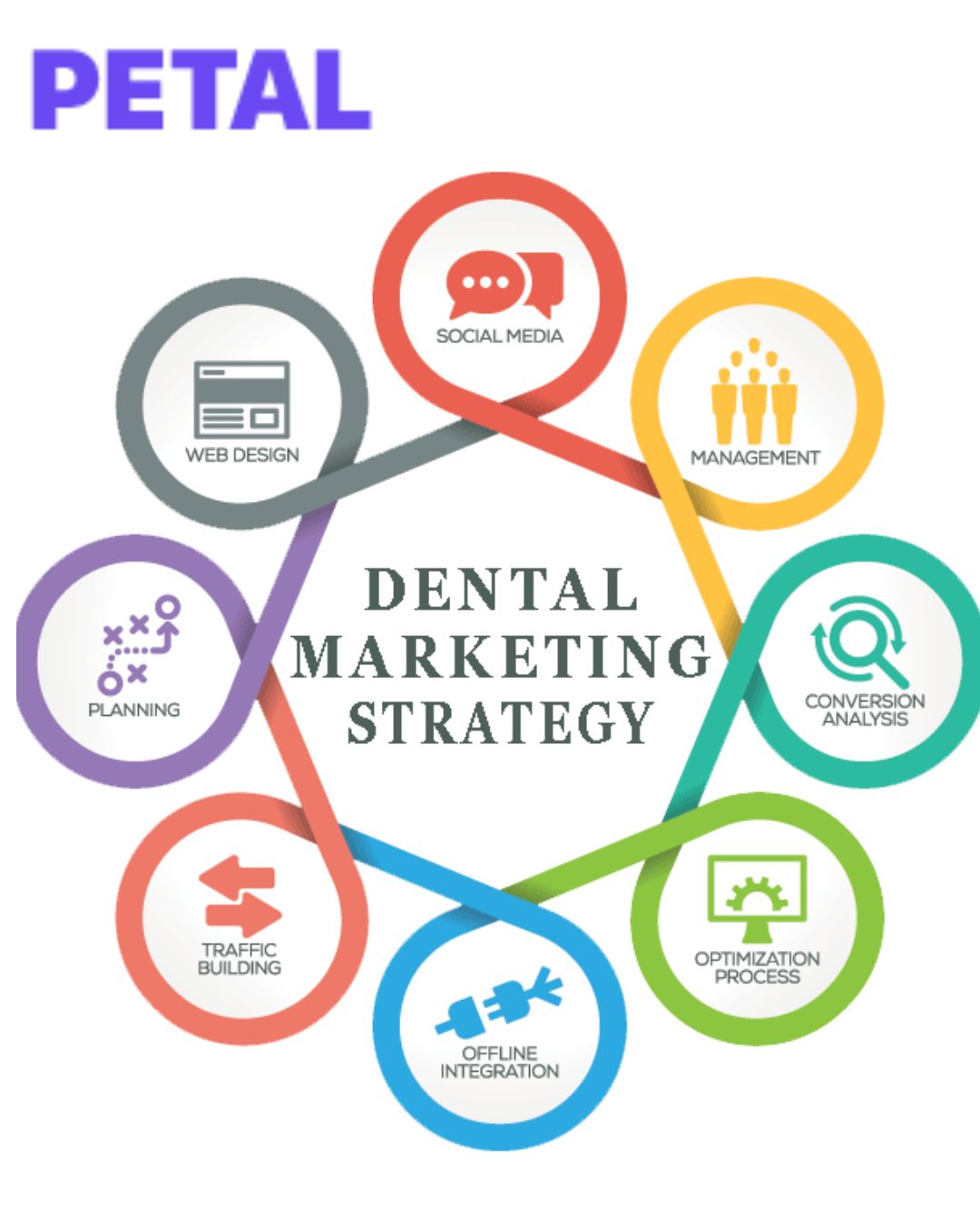Running a successful dental practice is about more than offering high-quality care. It requires foresight, adaptability, and a well-crafted strategic plan. Task Petal approach ensures your Dental practice strategic planning in today’s competitive landscape while continuously improving to meet both patient needs and industry demands. Below, we explore how strategic planning can help your dental practice grow, operate efficiently, and deliver exceptional patient satisfaction.
Why Strategic Planning Matters in Dentistry?
Dental Practice Strategic planning lays the foundation for sustainable growth and success. It’s not just about setting goals; it’s about turning those goals into actionable steps that address challenges, capitalize on opportunities, and adapt to changes in the dental industry. Whether you aim to increase revenue, streamline operations, or improve patient retention rates, a strategic plan helps dental practices stay organized and proactive.
A future-forward strategy goes beyond short-term gains. It focuses on building a robust, adaptable practice that offers outstanding patient care, fosters a motivated team, and delivers consistent growth. Here’s an in-depth guide to making it happen.
1. Engage Your Team from the Start
Your team is the backbone of your dental practice, and their active involvement is crucial to success. Early engagement ensures everyone feels invested in the practice’s goals and is motivated to work toward them.
- Communicate the Vision: Clearly articulate the practice’s strategic goals and explain how achieving them benefits both the team and patients. Share specific metrics of success such as improved workflow, new equipment, or enhanced patient experience.
- Gather Input: Ask for feedback during the planning stage to uncover opportunities and predict challenges. For instance, front-desk staff may have ideas about improving patient scheduling efficiency.
- Delegate Responsibilities: Assign roles strategically. For instance, a team member skilled in communication could oversee patient feedback programs, while someone with tech fluency could manage new software adoption.
By empowering your team to take ownership of specific tasks, you’ll foster accountability and build momentum.
2. Break Your Goals into Concrete, Digestible Steps
A well-laid plan must still have clarity to be effective. Breaking down your overall goals into smaller actionable steps ensures your team can focus on manageable milestones without feeling overwhelmed.
- Set Milestones: For example, if your goal is to implement new practice management software within six months, milestones could include vendor research, staff training, and initial implementation.
- Define Metrics of Success: Lay out how progress will be measured, such as patient satisfaction scores improving by 10% over a year or reducing appointment cancellations by 20%.
- Create Accountability Structures: Foster accountability with scheduled team check-ins, using progress tracking tools where tasks and deadlines are visible to everyone.
Through clarity and structure, your team will stay motivated and organized.
3. Incorporate Financial Planning into Your Strategy
Financial planning is essential for achieving long-term stability and making smart investments in growth. A comprehensive financial strategy helps you better understand your cash flow and allocate resources wisely.
- Budget for Growth:
Allocate funds for areas that generate a strong return on investment, such as marketing campaigns and equipment upgrades. For example, use profits from high-performing services like orthodontics to support innovative investments such as 3D imaging tools. - Prepare for Market Fluctuations:
Establish an emergency fund to cushion against slow seasons or unexpected expenses. For instance, during off-peak times, you could focus on offering special promotions to maintain cash flow. - Invest in Profit-Boosting Areas:
Identify opportunities to improve revenue. Adding complementary services, such as in-house teeth whitening or extended hours to attract more patients, can increase overall profitability.
A sound financial plan not only ensures operational stability but also provides opportunities for innovation and growth.
4. Leverage Modern Marketing Strategies
A strong marketing strategy is a key pillar of any future-forward practice. Thoughtful marketing not only attracts new patients but also strengthens relationships with your current base.
- Enhance Your Online Presence:
Ensure your website is mobile-friendly, visually appealing, and packed with educational content such as blogs or videos. Highlight patient success stories and provide easy online scheduling. - Optimize Local SEO:
Claim your listing on platforms like Google Business Profile and encourage patients to leave positive reviews. This bolsters your visibility in local search results when patients look for dental practices nearby. - Personalized Patient Outreach:
Use automation to send personalized appointment reminders, birthday greetings, and follow-up care messages. Showing patients you care strengthens loyalty and trust. - Leverage Social Media:
Build a presence on platforms like Instagram or Facebook to connect with your audience. Share tips on oral care, behind-the-scenes looks at your practice, and staff spotlights to foster engagement.
Effective marketing ensures your practice remains competitive while building trust with existing patients.
5. Prioritize Technological Integration for Efficiency
Adopting modern technology reduces inefficiencies and helps you provide a seamless experience for both staff and patients. This is vital for practices aiming to stay ahead of evolving industry trends.
- Adopt Digital Imaging and Diagnostics:
Advanced imaging tools, such as 3D scanners, save time and improve diagnostic accuracy. - Expand Telehealth Capabilities:
Many patients value the convenience of virtual appointments for consultations or follow-ups. - Use Analytics to Optimize Care and Operations:
Leverage analytics in practice management software to gain valuable insights into staff performance, appointment adherence, and other data points. Use this information to make data-driven improvements.
The right tech investments will save time, enhance care quality, and future-proof your operations.
6. Foster a Culture of Innovation
Innovation drives adaptability and ensures your practice continuously improves to meet patient and industry needs. Build a practice culture where creativity is encouraged, and growth is celebrated.
- Encourage Collaboration:
Hold brainstorming sessions where staff can propose new ideas, such as more efficient workflows or community outreach initiatives. - Stay Updated on Industry Trends:
Attend dental conferences or subscribe to trade journals to stay abreast of innovations in patient care and technology. - Learn from Competitors:
Observing best practices within competitor clinics can inspire new ideas for your practice. For instance, if another clinic has successfully added an oral health subscription service, consider whether this might work in your practice.
Innovation doesn’t have to be revolutionary. Small changes, like updating the design of your waiting room or offering digital patient forms, can have a major impact.
Monitor, Adapt, and Continuously Improve
Strategic plans must evolve over time as patient needs, market trends, and business conditions change. Create a flexible approach to monitor, evaluate, and refine your strategies.
- Measure Key Performance Indicators (KPIs):
Regularly track KPIs, such as patient retention, revenue trends, or treatment success rates, to ensure progress. - Solicit Feedback from Stakeholders:
Regularly ask staff and patients for honest feedback. This can reveal blind spots and provide actionable improvement ideas. - Create Yearly Reviews:
At the start of each year, reassess your strategic plan. Adapt goals based on your successes, setbacks, and emerging challenges.
This mindset of gradual, consistent refinement ensures long-term success.

Bringing Your Future-Forward Vision to Life
A future-forward practice is built through thoughtful, strategic actions. From engaging your team to prioritizing financial stability and investing in the patient experience, every step contributes to creating an adaptable, thriving dental business.
The process begins by looking forward but stays successful through consistent effort and adaptability. Start building your strategic plan today, and position your practice for lasting growth and sustained excellence. With the right roadmap, the future of your dental practice is brighter than ever.
TO KNOW MORE: Dental practice strategic planning
